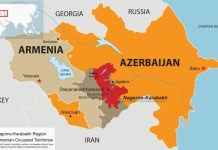5,500 km from Berlin, Germany, at the foot of Tian Shan Mountains in Kyrgyzstan, lies a German village. Home to Germans whose ancestors migrated to the fertile lands of Central Asia, Rot-Front is a village of ethnic Germans in Kyrgyzstan and remains the only village in the country with a substantial German minority.
The German community in Rot-Front has lived for generations in a closed world — entirely German-speaking, dominated by religion, fighting off modern intrusions like television. However, the journey which began nearly 500 years ago, is nearing its end with only 10 German families left in the village with a total population of 1000.

Die Ankunft
The migration of German-speaking people began in the 16th Century with the Mennonite Christian community arriving in Rot-Front, or then known as Bergtal in German, in the 18th century. The Mennonites belong to the Anabaptist tradition, which rejects aspects of the Protestant and Roman Catholic churches and believes in simple living and commitment to Pacifism.

The last arrivals of ethnic Germans to Kyrgyzstan were from the Soviet Union. After Nazi Germany invaded the Soviet Union in 1941, Joseph Stalin feared that the ethnic German population could be possible collaborators with the Nazi regime and hence deported them to the vast expanses of Central Asia including Kyrgyzstan to work in forced labour camps or in a kolkhozy. Under the iron curtain of the USSR, the ethnic Germans were not allowed to speak their language, celebrate German holidays and festivals or practise their religion. Even the name of Bergtal was changed to Rot-Front.
Forced labour, separation from family and ban on the use of all languages apart from Russian is the major factor behind ethnic Germans losing touch with the language. There are many ethnic Germans living throughout Central Asia who are not even aware of their German heritage.
Migration to Germany
After the collapse of the USSR in 1991, the iron curtain was lifted and 15 independent countries emerged. Kyrgyzstan was one of them and independence from USSR meant that the ethnic German population in Bergtal and the rest of the country were free to practice their religion and celebrate their traditions.
While the relaxing of religious freedom should have helped the German population in Bergtal and Kyrgyzstan to prosper, in reality, the opposite happened. There were two factors that accelerated the decline of ethnic Germans in Kyrgyzstan. First, due to the German Right of return law, ethnic Germans from Central Asia could move back to Germany and claim German citizenship. Second, while some ethnic Germans decided to stay back, they later decided to leave Kyrgyzstan for Germany or Russia in search of a better life. The post-Soviet economy of Kyrgyzstan was marred by corruption and nepotism and left a large chunk of its citizens struggling to make ends meets.
Due to migration, the population of ethnic Germans in Kyrgyzstan reduced from 100,000 in the 1990s to close to 8,000 in 2019. In Rot-Front, the German population has reduced from 1000 to less than 100 as per the latest records. The German bakery in the village has been shut and the use of the German language has drastically reduced in schools. The Mennonite Prayer hall is where the remaining Germans meet to socialize and pray.
Migration to Deutschland has slowed down and it is likely that the remaining population might spend the rest of their lives in Kyrgyzstan. The slow down stems from the inability of German-Kyrgyzstanis to integrate into German society and tougher immigration rules.

Germany is making efforts to keep the German identity alive in Kyrgyzstan. The Kyrgyz-German House in Bishkek offers language classes, hosts cultural events, and provides social services to Germans and non-Germans alike with German government support. The German Language Center in Bishkek, a partner of the German government-funded Goethe Institute in Almaty, allows people to learn the language and preserve their culture.
Born as ethnic Germans, raised in a Russian speaking nation and now living in independent Kyrgyzstan, life for Kyrgyz-Germans is complex. While efforts are being made to preserve this rare culture and heritage, the disappearance of Kyrgyz-Germans remains inevitable.
Written by – Armaan Srivastava





